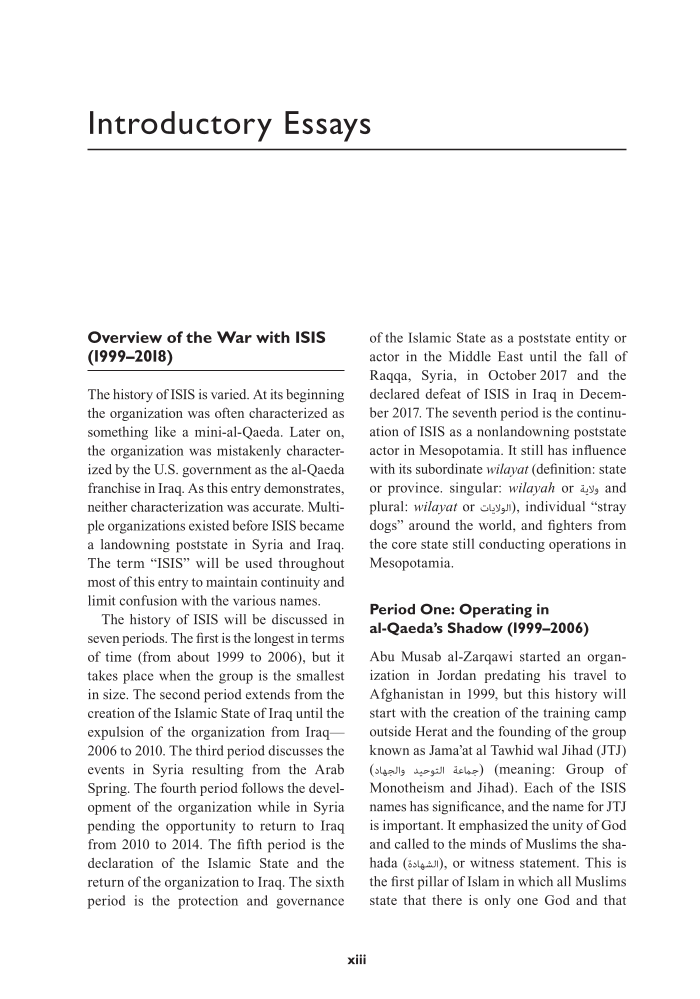xiii Overview of the War with ISIS (1999–2018) The history of ISIS is varied. At its beginning the organization was often characterized as something like a mini-al-Qaeda. Later on, the organization was mistakenly character- ized by the U.S. government as the al-Qaeda franchise in Iraq. As this entry demonstrates, neither characterization was accurate. Multi- ple organizations existed before ISIS became a landowning poststate in Syria and Iraq. The term “ISIS” will be used throughout most of this entry to maintain continuity and limit confusion with the various names. The history of ISIS will be discussed in seven periods. The first is the longest in terms of time (from about 1999 to 2006), but it takes place when the group is the smallest in size. The second period extends from the creation of the Islamic State of Iraq until the expulsion of the organization from Iraq— 2006 to 2010. The third period discusses the events in Syria resulting from the Arab Spring. The fourth period follows the devel- opment of the organization while in Syria pending the opportunity to return to Iraq from 2010 to 2014. The fifth period is the declaration of the Islamic State and the return of the organization to Iraq. The sixth period is the protection and governance of the Islamic State as a poststate entity or actor in the Middle East until the fall of Raqqa, Syria, in October 2017 and the declared defeat of ISIS in Iraq in Decem- ber 2017. The seventh period is the continu- ation of ISIS as a nonlandowning poststate actor in Mesopotamia. It still has influence with its subordinate wilayat (definition: state or province. singular: wilayah or ةيلاو and plural: wilayat or تايلاولا), individual “stray dogs” around the world, and fighters from the core state still conducting operations in Mesopotamia. Period One: Operating in al-Qaeda’s Shadow (1999–2006) Abu Musab al-Zarqawi started an organ ization in Jordan predating his travel to Afghanistan in 1999, but this history will start with the creation of the training camp outside Herat and the founding of the group known as Jama’at al Tawhid wal Jihad (JTJ) (داهجلاو ديحوتلا ةعماج) (meaning: Group of Monotheism and Jihad). Each of the ISIS names has significance, and the name for JTJ is important. It emphasized the unity of God and called to the minds of Muslims the sha- hada (ةداهشلا), or witness statement. This is the first pillar of Islam in which all Muslims state that there is only one God and that Introductory Essays
Document Details My Account Print multiple pages
Print
You have printed 0 times in the last 24 hours.
Your print count will reset on at .
You may print 0 more time(s) before then.
You may print a maximum of 0 pages at a time.









































































































































































































































































































































































